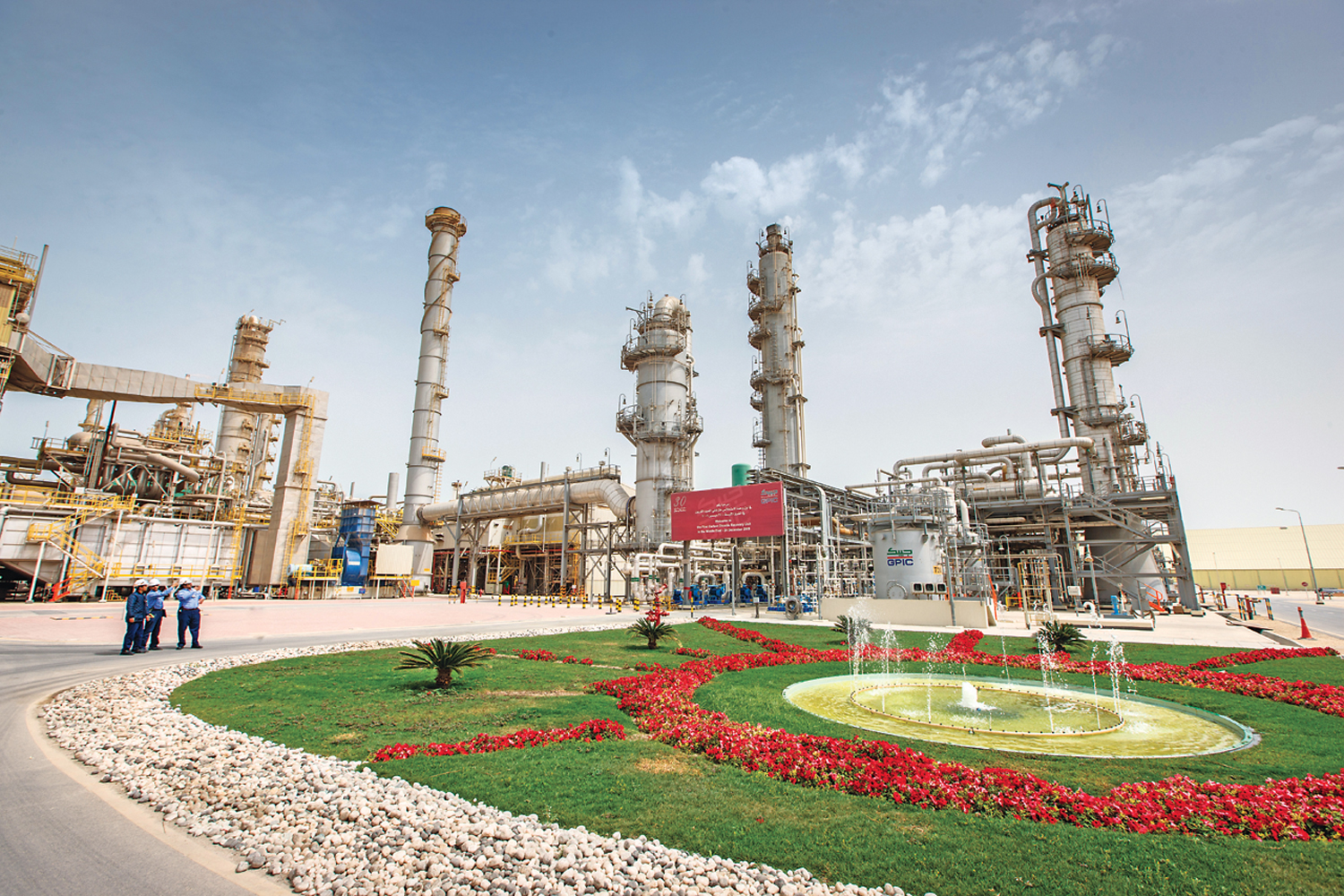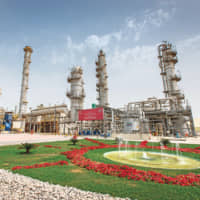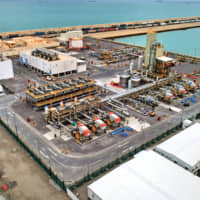Although oil was first discovered in Bahrain in 1932, 85 percent of its identified reserves still remain in the ground due to the kingdom’s challenging geology. Only one thing is preventing higher extraction levels, according to James Eastlack, CEO of Tatweer Petroleum, the company in charge of the country’s hydrocarbon exploration and production activities: “It’s not a matter of money — it’s always possible to get money. Technology really is the whole answer to our problems.”
The challenges are clear at the kingdom’s Bahrain Oil Field, an onshore site in the center of Bahrain that is approximately 15 kilometers long and 5 kilometers wide. The field contains a complex set of 16 oil and four gas reservoirs. Those reservoirs are stacked, with contents ranging from heavy oil near the surface, very light oil further down and gas at depths of 9,000 feet or more. And each of those reservoirs has unique geological characteristics that require different techniques for oil recovery.
“The field’s original oil reserves were estimated at 9.5 billion barrels and roughly 1.2 billion have been extracted to date. So, our recovery factor is roughly 12 to 14 percent, which is extremely low. The point is that there is an enormous amount of proven oil remaining to be produced, but the challenges are the reservoirs’ characteristics and finding the technology to produce them,” said Eastlack.
Tatweer has been working to meet those challenges since 2009. Prior to that, Bahrain Oil Field was the responsibility of the Bahrain Petroleum Company (Bapco) but, in a bid to revive the fortunes of the mature field, the government set up Tatweer as a joint venture between nogaholding, the kingdom’s oil and gas authority, U.S.-based Occidental Petroleum and Abu Dhabi’s Mubadala Petroleum.
“At that time,” noted Eastlack, “Production was roughly 30,000 barrels a day. Current production is around 42,000 a day. A lot of that success is because the joint-venture partners invested a considerable amount of money and engaged in an aggressive drilling program. The partnership dissolved in 2016 due to low oil prices, which meant there was not sufficient economic value for our international partners. Since then, Tatweer has been a 100-percent government-owned company.”
The company’s main goals are to increase the production of oil and the availability of gas to meet Bahrain’s future energy demands, as well as to make a crucial contribution to energizing the kingdom’s economic growth. “Tatweer’s mission includes exploration, development and production of Bahrain’s oil and gas, as part of which we are responsible for negotiating with international oil companies (IOCs). In addition, we manage a distribution system that supplies gas to roughly 30 commercial customers,” he said.
Pioneering oil recovery methods
To meet its goals, Tatweer has drilled 949 new wells over the last 10 years and carries out regular pilot testing of advanced enhanced oil recovery (EOR) techniques. Through its use of cutting-edge methodologies, Tatweer has received widespread industry recognition for achieving incredible recovery results under the circumstances, enabling reserves that were previously thought to be unrecoverable to be exploited today.
“We have been aggressively using whatever current technology is available to further exploit the field. Due to the geological complexity, the option of using typical EOR methods is not available to us, neither is the option of infill drilling for tighter spacing,” explained Eastlack.
One main weapon in Tatweer’s arsenal at the moment is seismic analysis, which allows it to build three-dimensional images of its reserves, he stated: “As we refine this process, we will actually try to identify smaller fault blocks and target these blocks very accurately within our drilling program. It’s very much like microsurgery in the oil field’s development.”
As a demonstration of how committed the company is to investigating every opportunity to extract more hydrocarbons from the Bahrain Oil Field, it is currently carrying out its seventh pilot project for advancing a shallow heavy-oil reservoir, where the oil is trapped in a fractured matrix of lime mudstone known as rubble.
“The reservoir has over a billion barrels in it and there has been literally no recovery. It is just sitting there and it is mobile but extraction with current technology is not cost effective,” Eastlack said.
Although it has yet to find success with rubble heavy oil, through its concerted use of new techniques Tatweer has been able to maintain an even production level of around 42,000 barrels of oil a day for the last few years. But Eastlack wants to use more emerging technologies to generate much higher production volumes for the future.
“We are looking for technical concepts that can reliably deliver economic barrels. If someone has that, then money is not a problem as the government is funding us 100 percent right now,” he stressed. To attract those technology providers, Tatweer offers enticing incentives.
Eastlack gave the example of a project the company is working on with a leading U.S.-based supplier of technology to the oil and gas industry: “If its technology works really well, it will get a success fee or a bonus based on the level of that success. That is the sort of thing we are trying right now with the service sector.”
Tatweer has also recently begun talks with a Japanese oil company on an initiative to test the use of carbon-dioxide injection for the recovery of the potentially significant reserves in an as yet undeveloped reservoir.
Minister of Oil Shaikh Mohamed bin Khalifa Al Khalifa added that, in fact, Bahrain is in talks with Japanese companies about various EOR technologies: “There is a vast resource to be produced from the Bahrain Oil Field if we can find the right technology. The oil is there and the challenge is to produce it at a low enough cost to make it profitable — that is why we are piloting a lot of technologies in the field.”
A new challenge
Technology will also be an important component in the exploitation of Bahrain’s 2018 hydrocarbon discovery — an estimated 80 billion barrels of oil, and 10-20 trillion cubic feet of gas.
The field covers 2,000 square kilometers of shallow waters in the Khaleej Al Bahrain Basin off the kingdom’s west coast and is thought to extend onshore. It is the country’s largest oil and gas find since the Bahrain Oil Field in 1932 and the government is targeting oil production levels of 200,000 barrels a day from the new site by 2023.
The geology of Khaleej Al Bahrain makes the minister optimistic about its future: “It is the same source rock as the giant fields of Saudi Arabia — one of the best source rocks in the world. Saudi Aramco has already started production on its side of the basin, so we know that the basin is rich and it is prolific.”
However, although the geology suggests huge potential, as at the Bahrain Oil Field, it is complex and technically challenging. Much of the oil component of the reservoir is tight oil — a light crude oil held deep underground in shale, which needs to be extracted by using hydraulic fracking.
Historically, shale oil has recovery rates of only 5 to 15 percent — which translates as an enormous amount of oil, given the estimated size of the reserves, but could contribute to a relatively high production cost.
In addition, most of the field is offshore. It is in shallow waters but, to date, offshore shale-oil production has not seen commercial success. “It is an unconventional play,” admitted Eastlack: “So what potential investors want from us is hard data from the field and long-term testing. Our role is to de-risk the development.”
To get international oil companies that data, Tatweer is drilling up to four wells, he said: “Right now we are drilling two onshore wells toward the north west of Bahrain. We want to confirm that there is an onshore component. Putting that on the table makes it more economically tempting because operators can start by developing the onshore and then move toward offshore production.”
De-risking opportunities for investors
Data collected from the wells will be used in a virtual data room and the first six months of well-production data should be available by the end of 2019. In a further bid to interest IOCs in the site, Tatweer has not set fixed contractual arrangements and is open to ideas on fiscal terms.
“Potentially, Khaleej Al Bahrain field could be broken up into several different operating areas, and there could be simple exploration and production sharing agreements (EPSAs) to be in partnership with Tatweer. But one of the attractive attributes of the Bahraini oil and gas sector is that there is no fixed model.
“We ask investors: what would work for you? Bahrain is thought to offer some of the best EPSAs in the region, but if an EPSA doesn’t work for you, we can negotiate a tax royalty, for example. That’s why I call it one of the world’s ultimate business-friendly places,” stated Eastlack.
Evidence of this business-focused approach came in May 2019, when an Italian oil company signed an exploration and production sharing-agreement for an unexplored Bahraini offshore block of over 2,800 square kilometers further north than the Khaleej Al Bahrain field. It is one of four offshore exploration blocks in Bahrain which Tatweer intends to offer to oil investors.
At the signing, the minister committed to “review all relevant aspects of the technical and commercial terms of the potential exploration and development within a reduced timeframe.” By March, the project was indeed on the fast track to an exclusive concession, with drilling to begin by the end of the year.
Another advantage for investors is that Bahrain’s hydrocarbon industry is mature, full spectrum and well serviced — everything an IOC needs is in place.
“Khaleej Al Bahrain sits next to and underneath an existing field, so when it comes to infrastructure, for example, it is there. In addition, we have the right legislations and regulations.
“Tatweer’s very collaborative relationship with Bahrain’s other hydrocarbon companies provides easy opportunities to market an investor’s production. If you are producing rich gas, for instance, Banagas can process it to extract the gas liquids. And even if Bapco cannot refine the lighter-crude product, they can export it. That takes a lot of risk out of the investment for international businesses,” Eastlack said.
He would love Japan’s oil, technology and servicing companies to play a greater role in expanding the Bahraini oil and gas sector: “The solutions to all the challenges in our unique fields are connected to technology. We have a very open policy about evaluating different techniques and will pilot extremely novel technologies. So, there is a huge opportunity for Japanese companies.”





